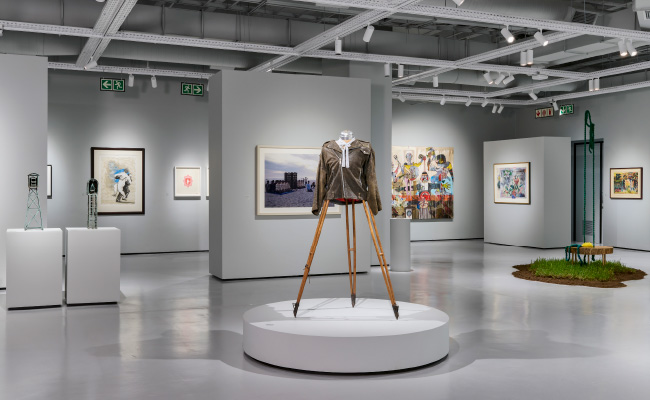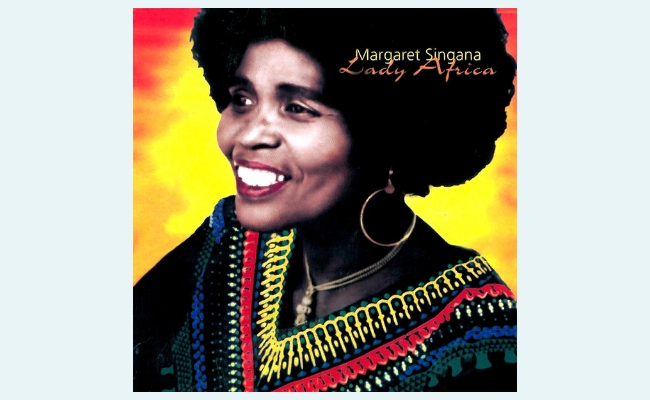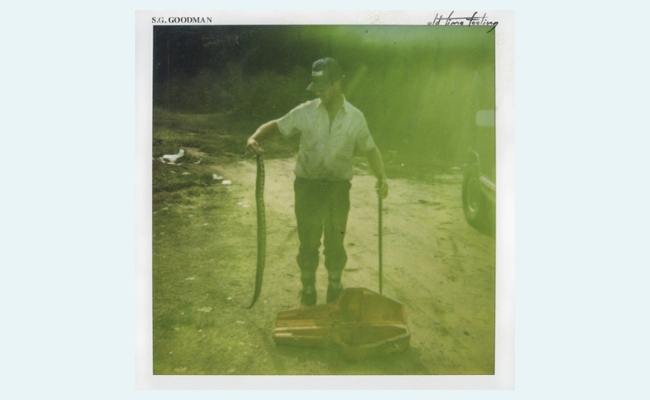You can almost hear the art aficionados rolling their eyes. A gallery in a mall? And not just any mall, but the big daddy of pastiche shopping centres, Nelson Mandela Square. The pseudo-Tuscan epicentre of Sandton, complete with steakhouses and that famously out-of-proportion statue of Madiba.
“Ugh, how Joburg,” they’ll mutter. But hang on, culture police – not so fast with the criticism. A couple of months ago, Standard Bank opened its new Art Lab, a satellite exhibition space off Nelson Mandela Square that showcases work from the bank’s formidable art collection. I spent time there recently with curator Dr Same Dluli, to see what this experiment in accessibility really looks like.
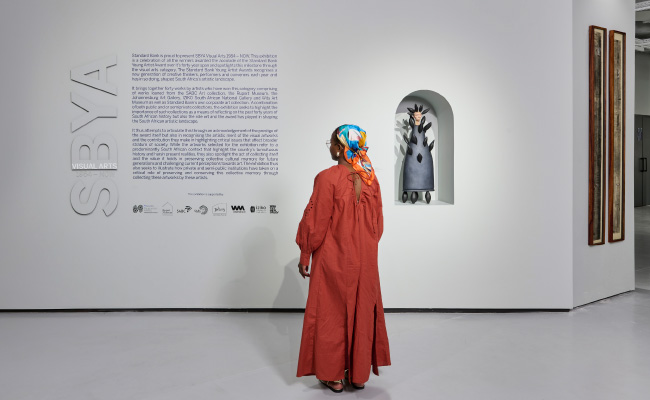
Turns out the Art Lab is actually a smart and proactive exercise in access: a deliberate attempt to make great South African art part of everyday life, in a setting where almost everyone feels wildly at home. Let’s face it, we Joburgers love a mall. They are our public squares, our indoor high streets. So perhaps it’s only fitting that one of South Africa’s most important corporate art collections has set up (temporary) shop in our natural habitat.
Dluli, who oversees the Standard Bank art collection, runs its exhibitions and ensures that everything from the Fox Street gallery to the bank’s Rosebank headquarters is filled with art, makes the purpose of the new space clear. “This isn’t a move from the city,” she tells me. “It’s a satellite, an extension. Our gallery in town is graduating to museum status. This gives us room to experiment.”
That sense of experimentation underpins the Art Lab, which has a lease at Nelson Mandela Square and plans to mount three exhibitions a year. It’s a modest-looking space at first glance but once inside, it’s surprisingly absorbing. And the location is no accident. Sources generally put annual footfall through the Sandton City and Nelson Mandela Square precinct at well over 20 million visitors. So why not bring art to these masses? Plus the malls are a Liberty gig, and Standard Bank owns that group, so simpatico!
Crucially, nothing at the Lab is for sale and there is no entry fee. “You don’t have to pay to go in, and there’s no expectation to buy something,” Dluli says. “You don’t have someone asking, ‘Can I interest you in this piece?’” This makes the Art Lab a rare attraction – it’s free, open and enriching.
The current exhibition, 40 Years of the Standard Bank Young Artist Awards, is a considered and impressive survey of contemporary South African art and the young talents who have won the award over the decades. Today most of them are very established names, so it’s also an important glimpse at how spot-on the prize has been, and how many local artists have gone on to have successful careers. In this instance, works have been drawn from the bank’s holdings as well as loans from the likes of the Johannesburg Art Gallery, the SABC collection and the Rupert Museum.
Best on show
Among them are a print featuring Mary Sibande’s iconic Sophie, alongside Gabriel Goliath’s haunting 2014 audio piece on gender-based violence, which plays a gunshot every three hours – a statistical soundtrack to South Africa’s crimes against women crisis. There are paintings by Blessing Ngobeni, conceptual works by Catherine Smith and early pieces by William Kentridge and Sam Nhlengethwa, each representing a thread in the wider tapestry of South African visual language.

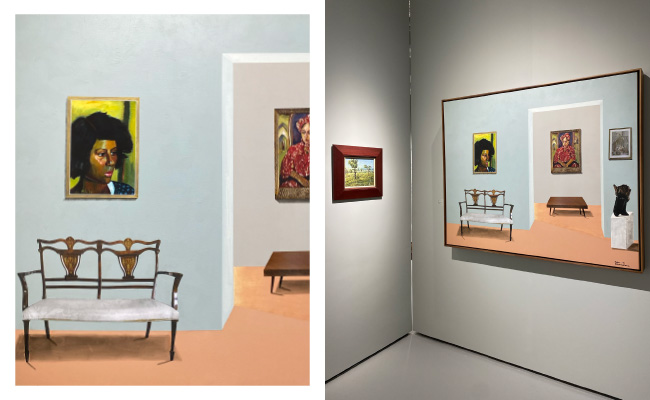
As Dluli puts it: “It’s a way of looking at how these artists have shaped our cultural landscape – and of letting people encounter that outside traditional gallery walls.” During our walkabout, I watched a man in a suit who was probably on his lunch break drift in, pause, and take his time with a Michael MacGarry. No hurry, no self-consciousness. Just looking. That’s the win.
Dluli is a serious academic in the big corporate realm, but her sense of rigour is wonderfully offset by real-world pragmatism and warmth. She jokes about the vault where the collection lives – a literal converted bank vault – and tells stories about late-night installations. Her honesty is disarming. “We need to demystify this,” she says. “A lot of people feel they don’t belong in art spaces”. In response to my comment on the dire lack of art education at school level in South Africa, she nods and adds, “As the French say, if you don’t go into a gallery as a child, you’re likely never to do so as an adult.”
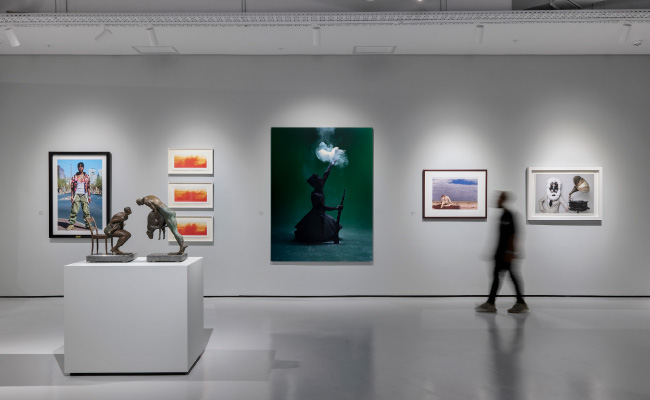
She wants to change that, and she’s already thinking beyond this first experiment. Dluli says she would love to connect with the Sandton Theatre (literally a few metres down the drag) and library across the square to create a small cultural hub. “Imagine a children’s story time that flows into a gallery visit, or a theatre production that links to an exhibition.” She makes it sound natural – inevitable, even. Frankly, the sort of stuff that would be par for the course as a government function if the City of Joburg did its job. But here it is, once again, private institutions doing the public heavy lifting.
If the museum in a mall concept sounds unusual, it is, but it’s also not unprecedented. Around the world, art has been slipping into public and commercial spaces for years. At Amsterdam’s Schiphol Airport, a satellite of the Rijksmuseum allows travellers to clock actual Rembrandts while waiting for a boarding call. It’s open 24/7 – and free. Hong Kong’s K11 Art Mall is the self-proclaimed “museum-retail complex” where shoppers wander past Yayoi Kusama pumpkins and Olafur Eliasson installations on their way to Zara.
The Standard Bank Art Lab sits somewhere between those two: not commercial spectacle, not institutional annex, but a proudly South African middle ground. Serious art in a space that’s anything but hallowed or institutionalised.
Why it matters
Joburg’s art infrastructure is fragile. The Johannesburg Art Gallery remains a shemozzle, the city’s public museums are underfunded, and the perception persists that art is for “other people”. The Art Lab offers a small but meaningful correction. It’s a place where someone on a coffee run could stumble upon a Bonnie Ntshalintshali, where post Checkers-shop, a family might learn a thing or two about contemporary photography.

As Dluli says: “It’s about cultivating that habit; making art part of where people already are.” The cynic in me knows this is also smart branding for the bank. But the optimist – and frankly, the Joburger – in me thinks: who cares? If a financial institution wants to spend its marketing budget exposing thousands to the country’s finest artists, more power to them.
So yes, a gallery in a mall might sound like heresy to the highbrow. But in practice it’s refreshingly democratic: a space that collapses the distance between the art world and the world we actually live in. And if, somewhere between the Italian shoe store and the pistachio ice cream, someone meets a Mary Sibande for the first time, well, that’s a good day for art in Joburg.
For more of our art coverage go here
Top image: image of gallery with Nicholas Hlobo sculpture in the centre
Sign up to Currency’s weekly newsletters to receive your own bulletin of weekday news and weekend treats. Register here.



